Dedicated with love to Ellie Curtis 1998 - 2025
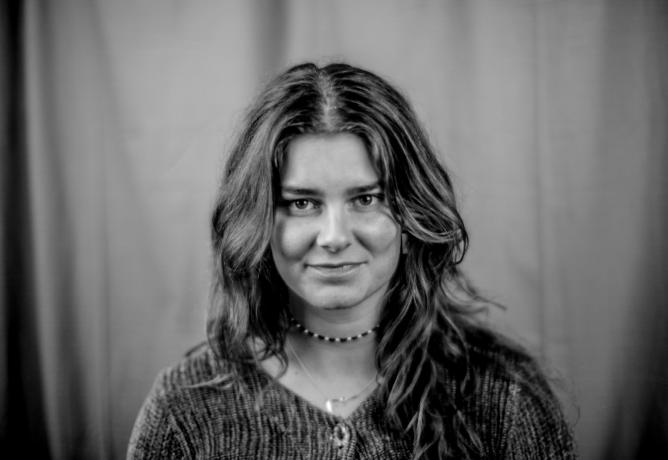


Our primary motivation over these decades of place-making at Knoll Farm has been our love of people, of this earth, and of learning how to make refuge for both.
Making refuge begins with understanding repair. Repair is often the best thing that humans can do. Repairing things on a farm, or in a community, or a bio-region, among people with histories that make some seen and others erased, asks for great dedication and care. It requires knowing that something is broken in the frst place, not neglecting it, and the willingness to stop to fx it. It’s easier to throw something away or to put it aside and forget it. Repair is the hardest work of any day, or any life, often done at frst light when one is at their best. It requires earned wisdom and discernment about how not to make things worse, about how to proceed at the speed of trust. Most of the repairs between human beings entail returning something taken. Many of the most important repairs require years of quiet, dedicated action without regard to whether or not it is a great folly or a great work. I love northern New England for its people who understand what’s broken and who are trying to learn together how to repair it.
I’ve walked, and laughed, and loved with an ache in my heart since my early thirties; it’s formed the lines on my face and is what pulled us to Knoll Farm; here, slowly, the ache became a yearning and then a practice. We’ve welcomed thousands of people here, and had countless conversations that all refected this yearning.

We practice it by unlocking this place and sharing it, by allowing people to belong to Knoll Farm in their own way. Eddie Merma and his Vermont Sculpture School, designing and creating his own vision for how to give kids respect and their own relationship to skill, fun and trees. Telling all the stories of this land, not just the ones from our own culture. Believing that land is a gift for all, not posting our land, so that others may have free and open access. Creating a memorial forest to honor our elders who did as much as they could and gave us the chance to do something better. Making refuge is all these things and also taking the time to share these stories with seasonal staf, who are passing through here on their life’s journey, to understand just a little bit why we do what we do.
My lived experience is that by making refuge for others, we have earned a kind of security that’s measured in right relationship with others. We are in a lineage of gifts, doing what we believe is right by those gifts, writing about it not to evangelize but to be held accountable. Ann Day lived here for 50 years before us. She used her big heart to care for people and, at the end of her run, to give away this farm so that a new generation of ideas and energy might take root. Helen and I arrived into that gift.
In the two plus decades of being here, we raised a family, built an organization and practiced this life on the median income of a Vermont family. Community, not individual wealth, has sustained us in every way. In consistently sharing this place and living out our values as best we can, our community has helped us to build a new tool shop, completely renovate two barns, build a new performance pavilion, add solar panels and create a residential retreat center. Just last year, more than 300 people donated to the barn campaign, making that beautiful barn last another 100 years. In never locking a door, our trust has rarely been broken.
Why am I sharing this? Making refuge is everyone’s work. It’s digging each other out of snowbanks, a kindness with the only expectation that kindness be passed on. It doesn’t take personal wealth or a nonproft organization to make refuge. In Vermont there has always been an ethic of ferce self-reliance, of “take care of yourself, just get through winter.” But there has also been a strong ethic of neighbors helping neighbors and also passing strangers. In Vermont and across America right now, we need to cultivate the capacity for strangers to become family.
The highest expression of making refuge that I’ve participated in is First Light, an extraordinary collaboration that began humbly between Native and nonnative people around a fre circle at Knoll Farm in 2010. First Light has become a co-creation between hundreds of leaders, Penobscot, Passamaquoddy, Maliseet and Micmac Nations working together with 65 nonnative land-holding organizations to return land, money, and decision-making to Wabanaki communities. We are stronger together: many organizations might be able to achieve what one organization could not. Through moving at the speed of trust, these land-holding groups are working at the direction of the Wabanaki Commission on dozens of land return projects that beneft Wabanaki culture, economy and relationship to kin. For First Light, to be a refuge means relearning history, recentering others, returning things.

Even the people – the Wabanaki – who were here in our region frst, were willing to share it with us.
There are many things happening at Knoll Farm that one can’t readily see. The stories of change are hardly ever ours to tell. But the work of making refuge done ffteen and twenty years ago, to help nurture a generation of leaders who might bring conservation and social justice together, continues to create real change in real places today. Making refuge is in line with the great American traditions of sharing wealth, aiding one another, and opening our homes to strangers.
This is the power of relationships, the evidence that we never exist alone, and that our relationships form our potential. Our collective thriving is contingent upon making this repair.
Making refuge is about yearning for relationships, making amends, and fnding more durable answers to confict and separation through healing and belonging. And that all starts with the land and who is allowed to enjoy it. How much is enough? What are we willing to share in this country?
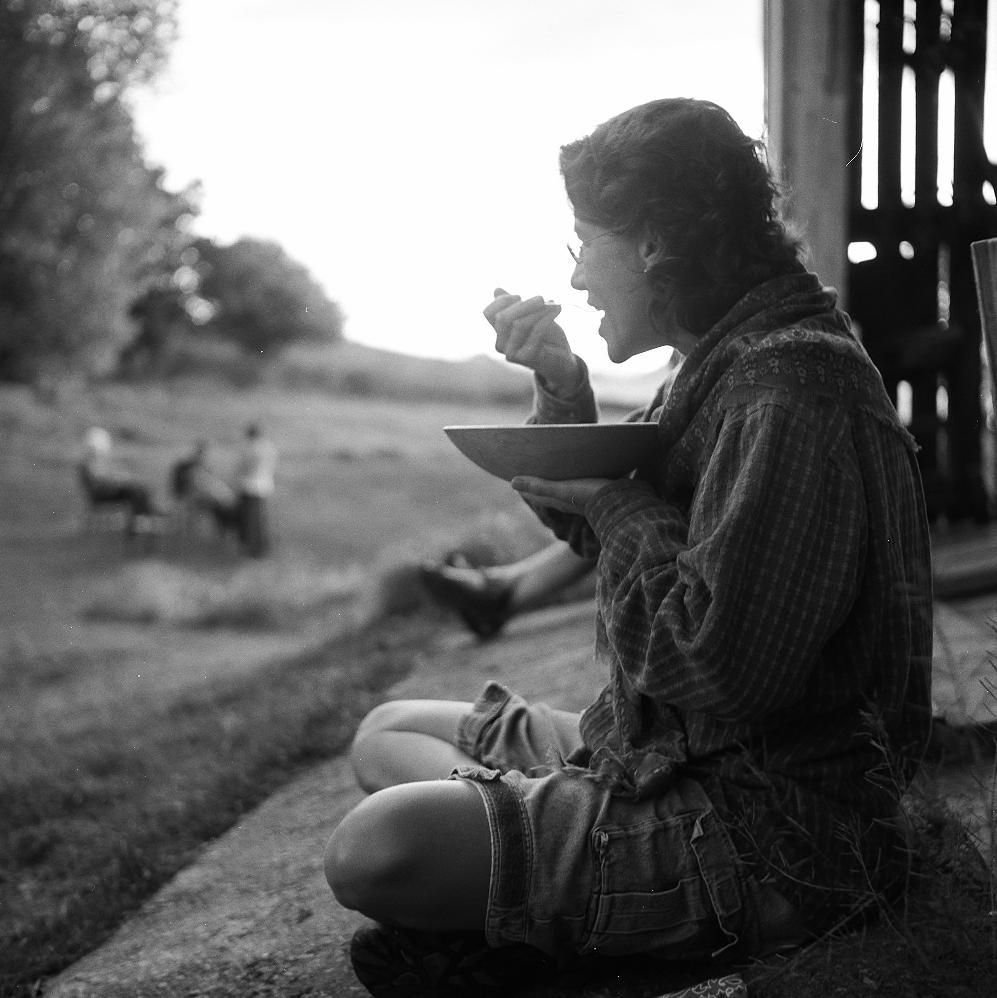
“I’ve always felt that human being could only be saved by another human being. I am aware that we do not save each other often. But I am also aware that we save each other some of the time.”
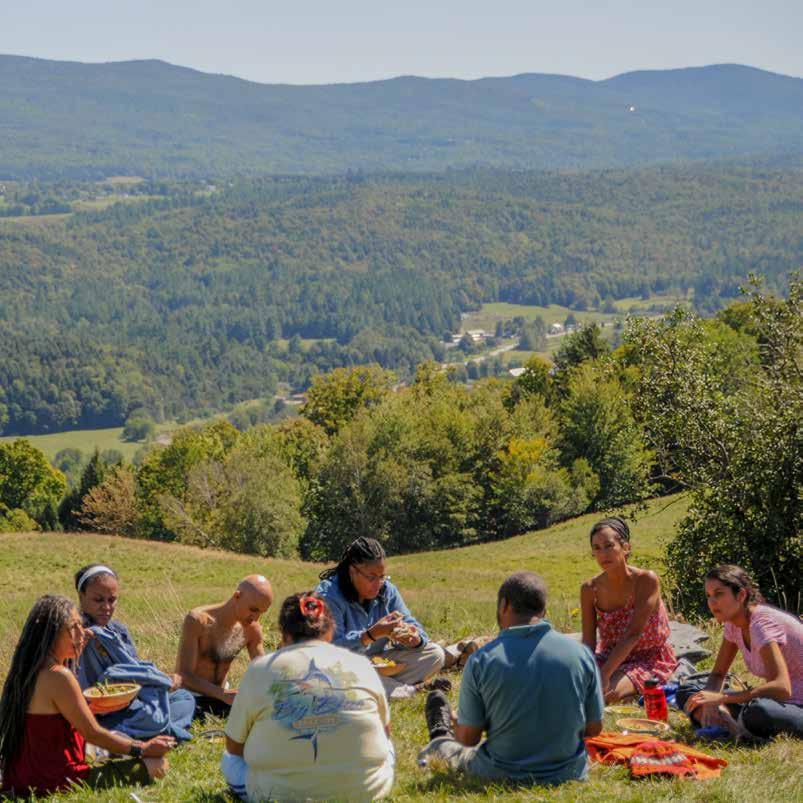
James Baldwin
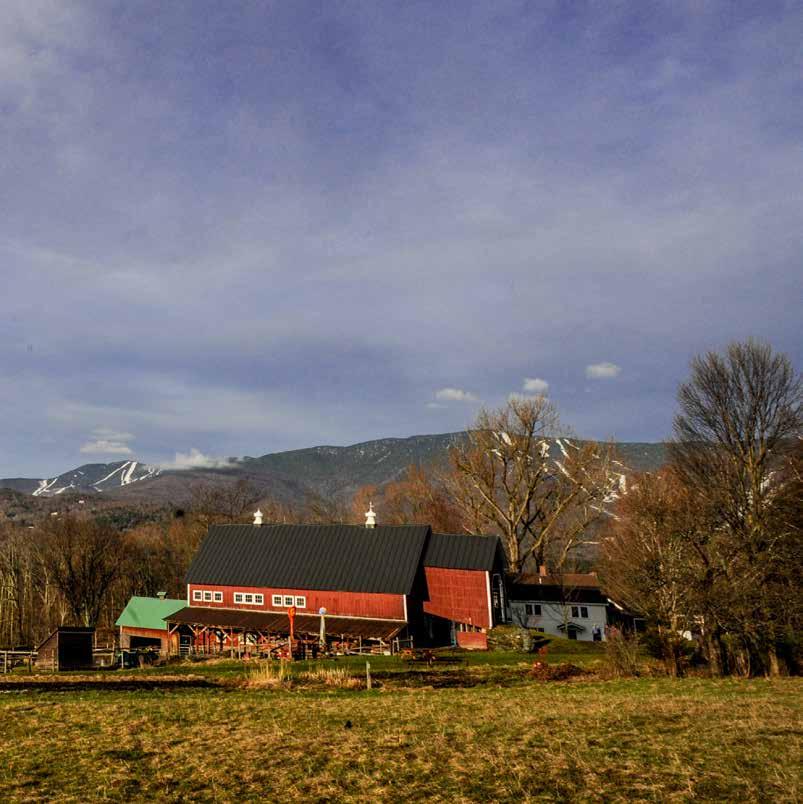
“What I know is this: When one hungers for the light it is only because one’s knowledge of the dark is so deep.”

Terry Tempest Williams,







The Farm’s 2024 Season by the numbers
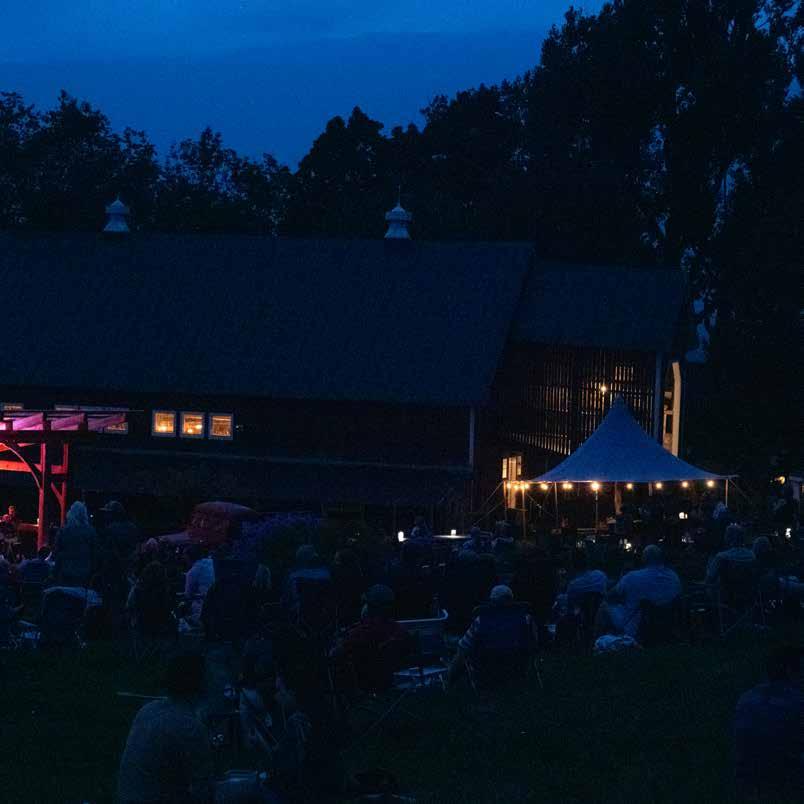
We harvested 1869 pints of blueberries to sell to 3 co-ops.
Visitors picked another 1696 pints. We made 15 gallons of blueberry vinegar. We had 36 Icelandic lambs born, reaching a historical total of 876 born here. We sold 12 starter focks to new farmers.
We harvested 240 pounds of wool. 926 people attended our 6 summer concerts, including 3 Beneft Concerts that helped us renovate the barn, with performances by The Mammals, Caitlin Canty, and Kat Wright.





“There are years that ask questions and years that answer.” – Zora Neale Thurston

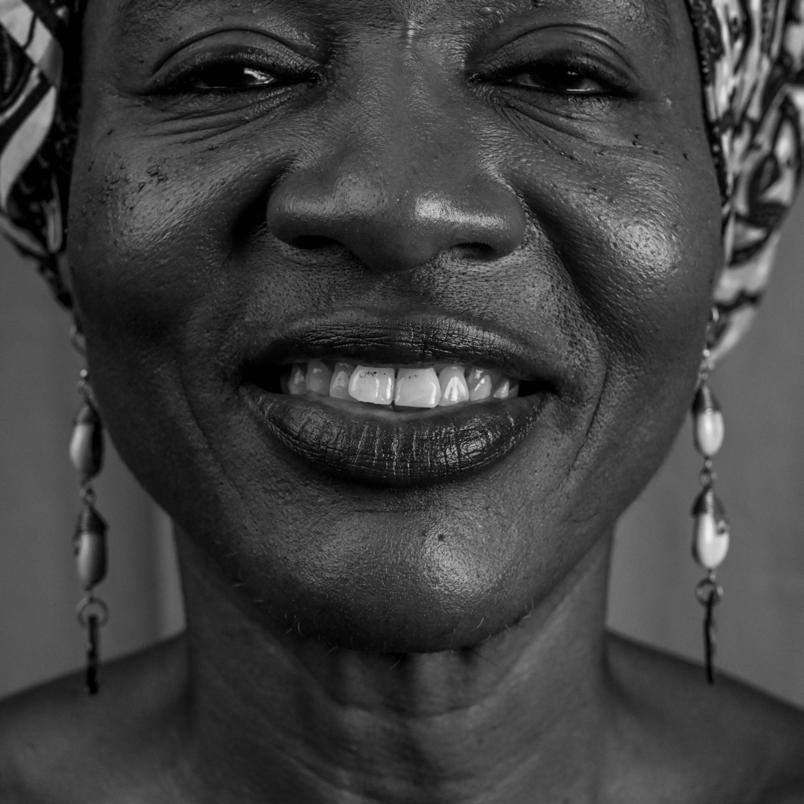


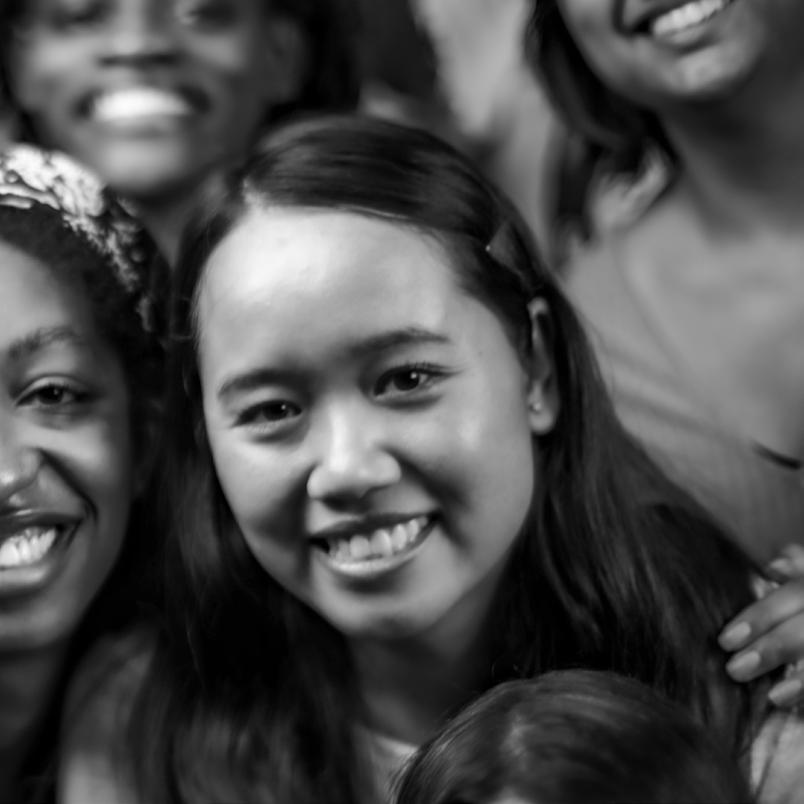

“Power without love is reckless and abusive, and love without power is sentimental and anemic. Power at its best is love implementing the demands of justice, and justice at its best is love correcting everything that stands against love.”
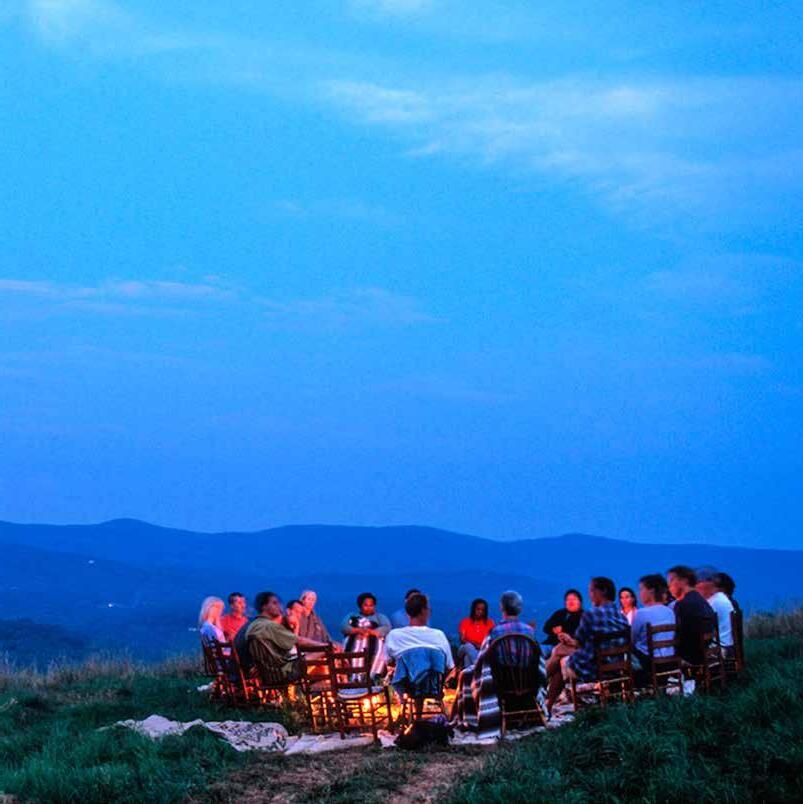
Dr. Martin Luther King, 1967

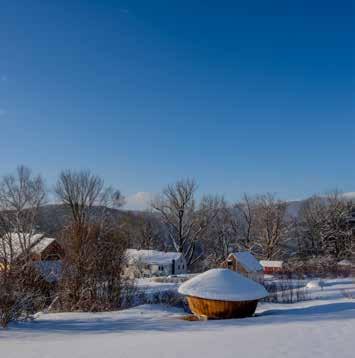


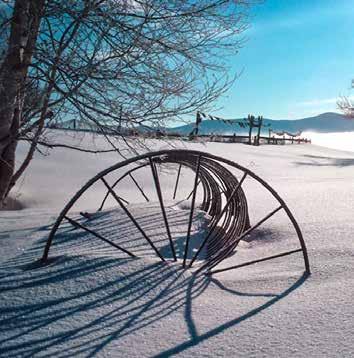










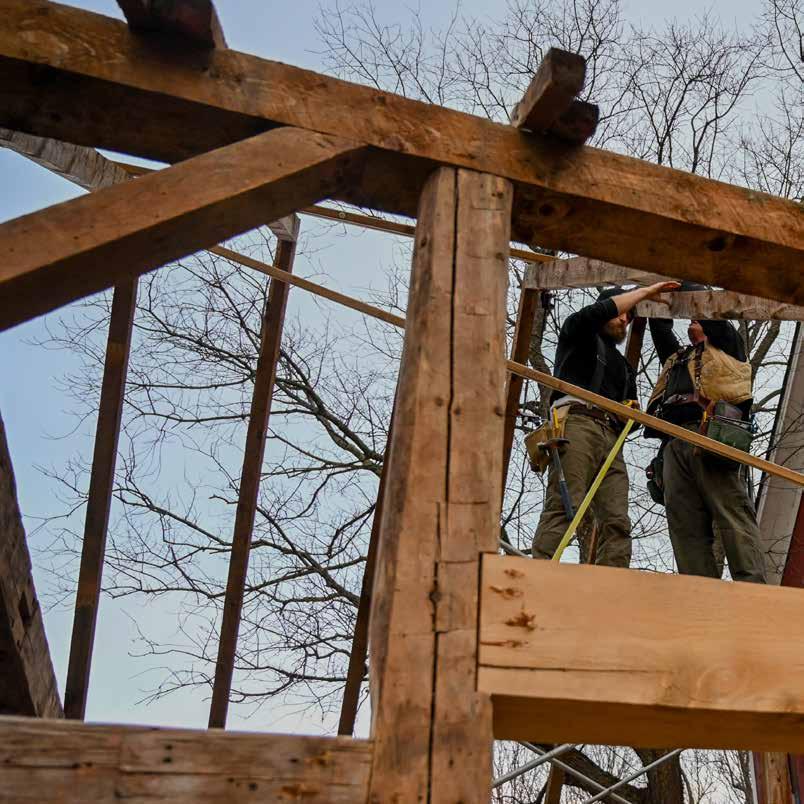
Our far and wide community raised over $800,000 in 2023 and 2024, in order to renovate our historic McLaughlin Barn!
42 households gave up to $100
79 households gave more than $100
24 households gave more than $500
36 households gave more than $1000
14 households gave more than $5000
8 households gave more than $10,000
2 households gave more than $25,000
2 households gave more than $50,000
1 household gave more than $100,000
And one Anonymous donor gave $250,000!

Thank you to all 209 households, representing more than 300 individuals, who gave to our historic Barn Centennial Campaign, so that we could restore the Knoll Farm barn and make refuge here for another century.

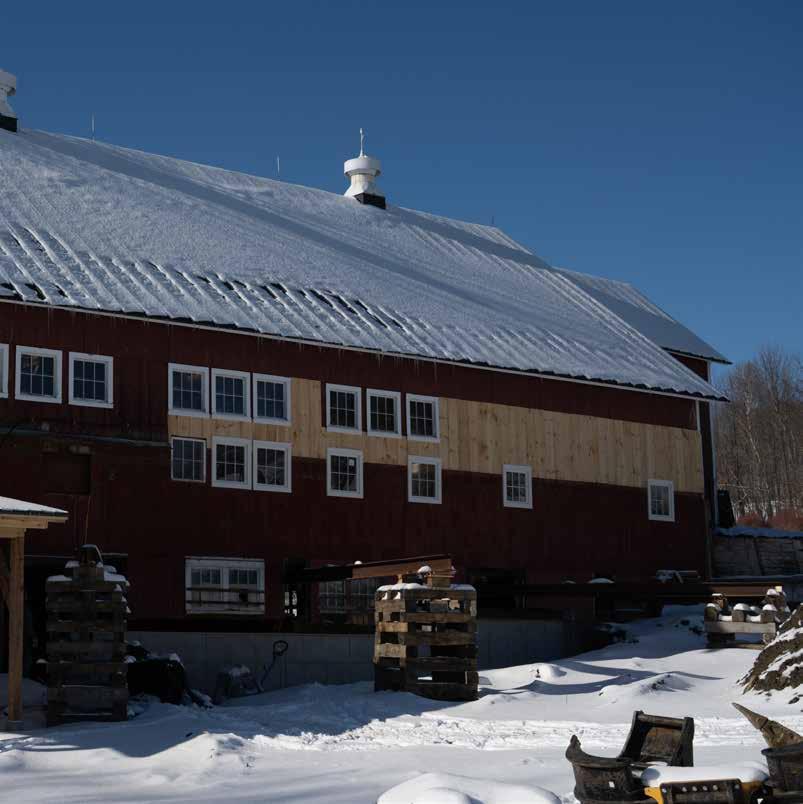
“I would like us do something unprecedented, to create ourselves without fnding it necessary to create an enemy.”
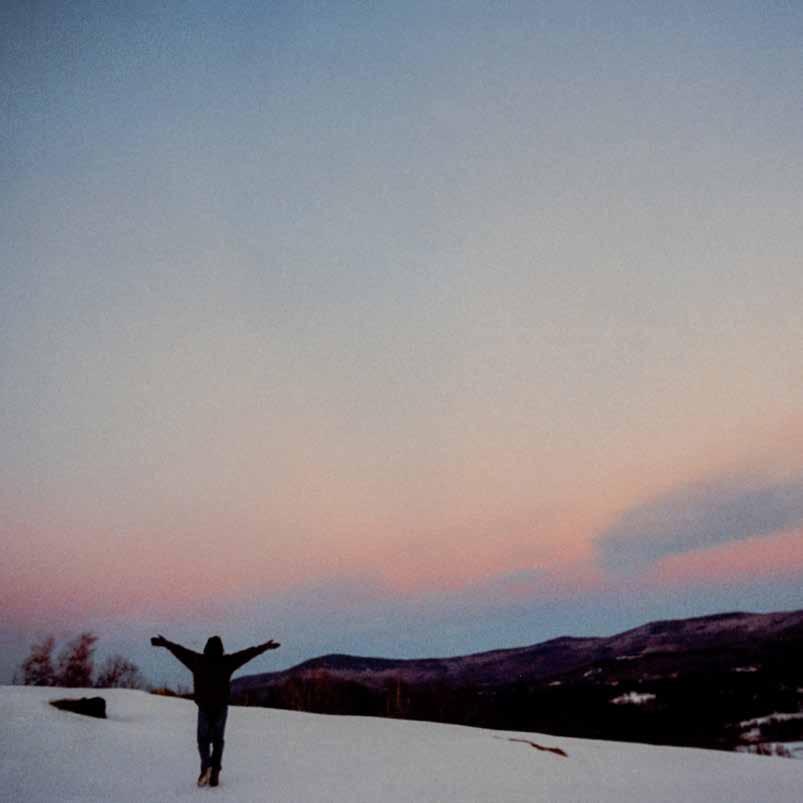
James Baldwin
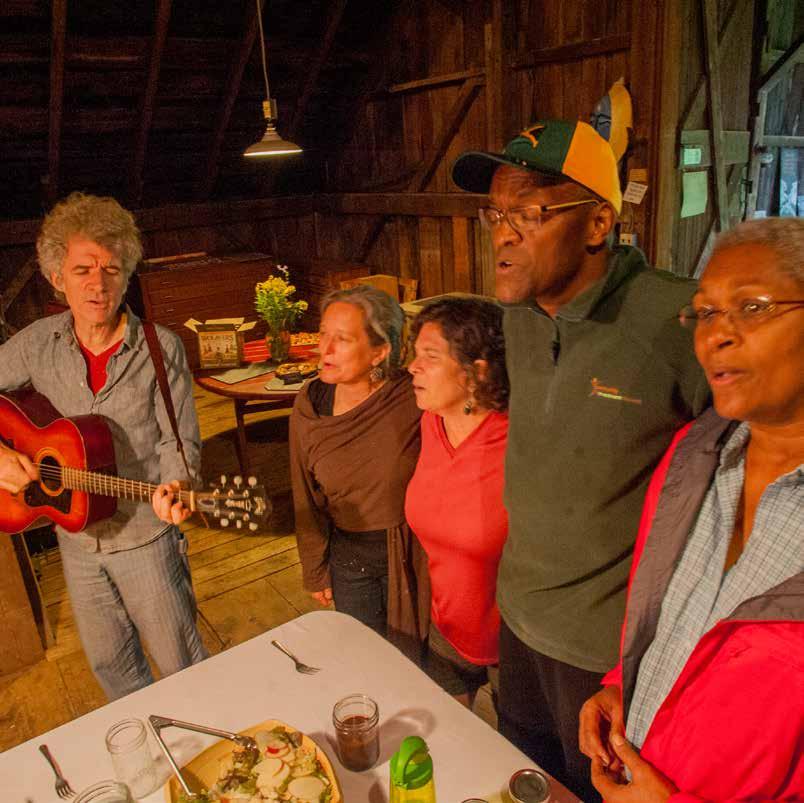
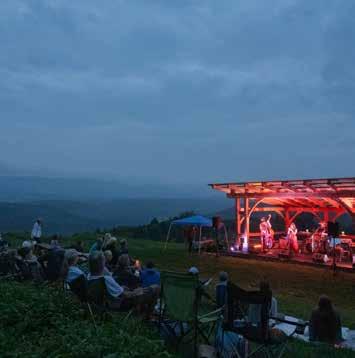



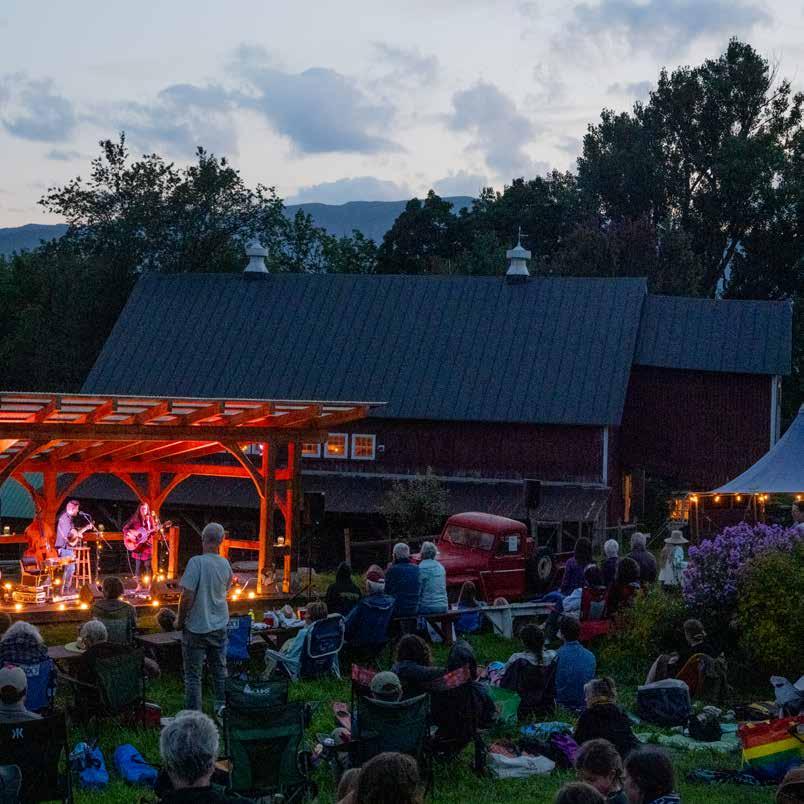

“We become what we practice and we are always practicing something.” Alta Starr


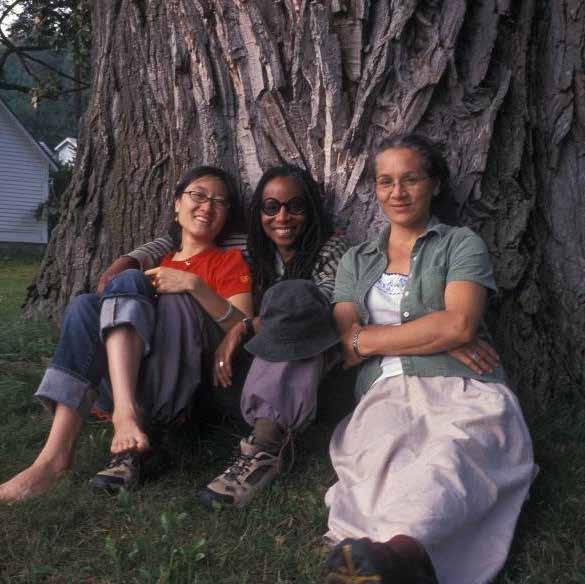


“Even as earth is being decimated, she is giving birth, creating herself.”

David James Duncan

The highest expression of making refuge that we’ve participated in is First Light, an extraordinary collaboration that began humbly between Native and nonnative people around a fre circle at Knoll Farm in 2010. Today, First Light and the Wabanaki Commission on Land and Stewardship are two separate but highly interdependent organizations working together for Wabanaki wellbeing in the place now called Maine. At the core of this work is equity and Indigenous-led conservation.
We are a co-creation between hundreds of leaders, Penobscot, Passamaquoddy, Maliseet and Micmac Nations working together with 65 nonnative land-holding organizations to return land, money, and decision-making to Wabanaki communities. We are stronger together: many organizations might be able to achieve what one organization could not. Through moving at the speed of trust, these land-holding groups are working in the direction of the Wabanaki Commission on dozens of land return projects that beneft Wabanaki culture, economy and relationship to kin. This collaboration has already returned 5,000 acres and is now
working on a far more ambitious undertaking to do privately what state and federal policy has failed to do. Collectively referred to as Tributary Land Returns, 11 separate landscapes totaling more than 50,000 acres will return to Wabanaki stewardship. These lakes, rivers, wetlands, and coastal islands will provide space for cultural practices, for economic growth and give room for Wabanaki communities and dreams to grow. All will beneft from this, and it all begins with a more equitable redistribution of land and resources.

The following pages highlight just some of the moments of this work.
To learn more, visit dawnlandreturn.org (below, left). To learn how First Light got started, you can also watch the video “Wabanaki Land Return and First Light – Peter Forbes” on YouTube, created by the Kalliopeia Foundation (below, right).



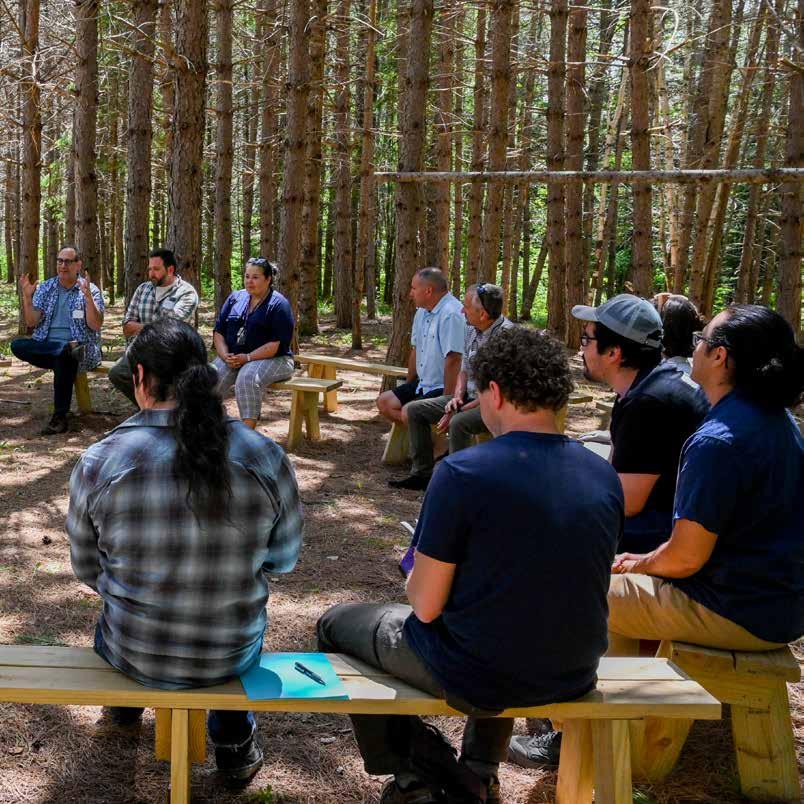
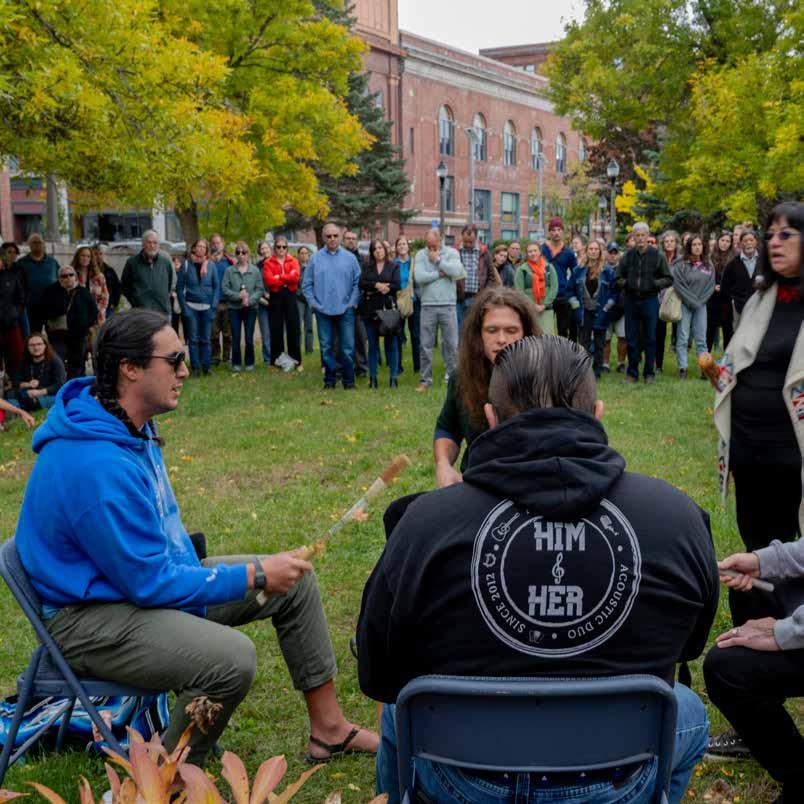

















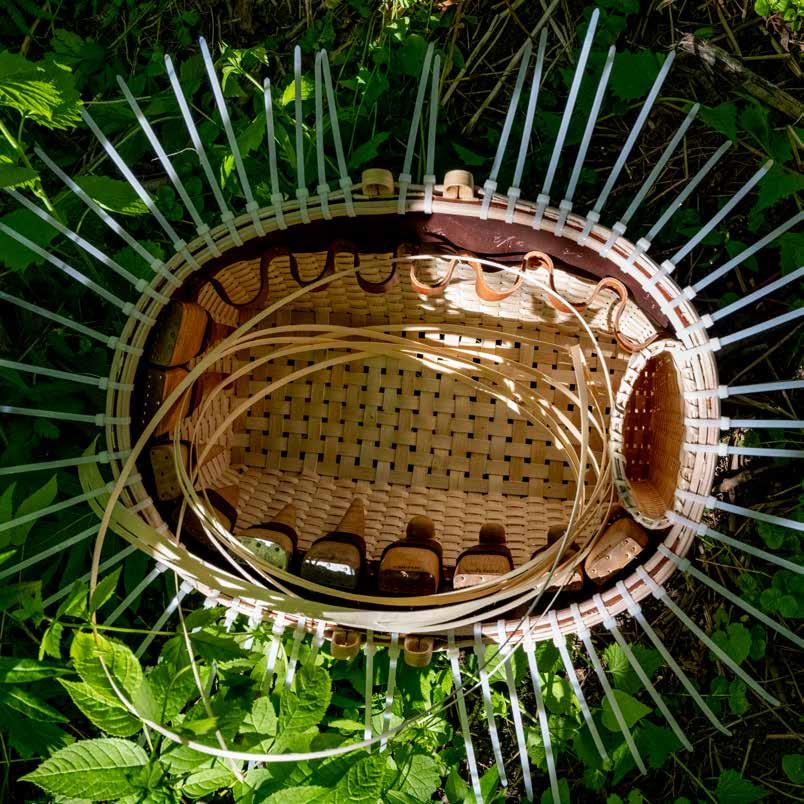
(End of photographs from First Light)






“Maintain a conversation with someplace that empowers you and in which you feel that you are in the presence of the scared. That’s not primitive, its profound. And its not part of the past, its part of the future.”

Barry Lopez

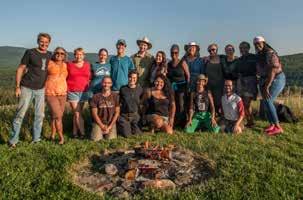






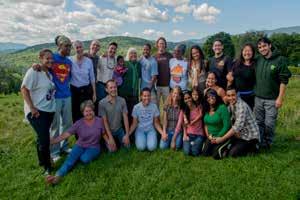


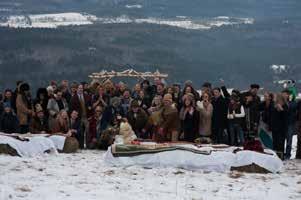

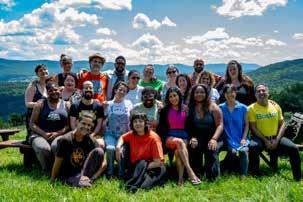

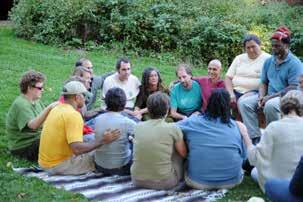

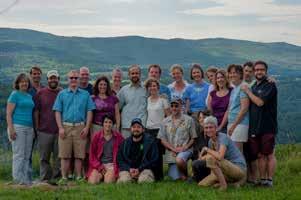










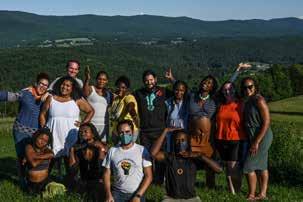
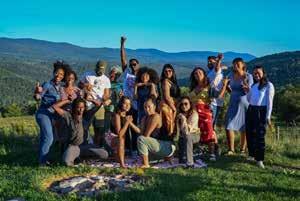
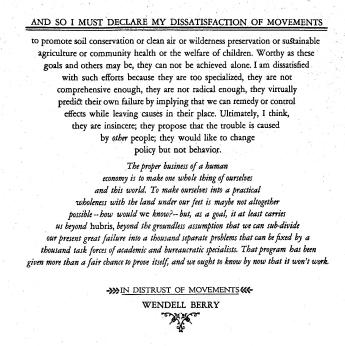
Page 2 -– This wooden performance stage was created by our dear friend and neighbor Ky Koitzsch. It was a Covid project sponsored by many donors and it’s changed so much about the farm.
P. 8 – Frank Peterman and Helen Whybrow, 2005.
P. 11 – A photo from one of our earliest moments at Knoll Farm, when we arrived with Willow when she was six years old.
P. 14 – Oho, one of our favorite rams, 2007.
P. 16 – Drawing of Knoll Farm’s The Trumpeter, by Emma Goldenthal. (Also appears on P. 102.)
P. 18 – Better Selves Fellows Ray Hage and Rajiv Khanna, 2022.
P. 19 – Easter sunrise service has been a tradition at Knoll Farm for 75 years.
P. 22 – One of our favorite photos from our frst summer at Knoll Farm in 2002.
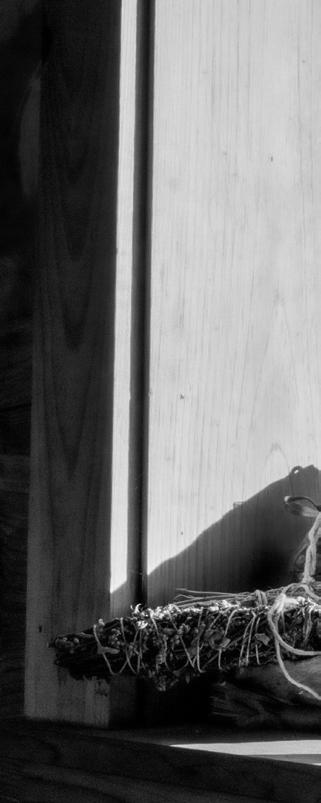



P. 23, bottom left – This is John Francis, the “planetwalker”, on one of his three visits to Knoll Farm. planetwalk.org.
P. 24 – We were so honored to have Gibrán Rivera’s Evolutionary Leadership course hosted at the farm.
P. 31 – Ky Koitsch, our neighbor and expert timber framer, has created fve structures at Knoll Farm. This one is the sitting pavilion for the new sauna at our yurt village.
P. 33 – Better Selves Fellow Dzidzor Azaglo. In 2022, Peter started to make black and white portraits of all the Better Selves Fellows who wished to participate. It’s become a lovely tradition on the last night of the fellowship.
P. 34 – Better Selves Fellow Emira Woods.
P. 35 – Better Selves Fellows Curt and Myra Marcellin.
P. 38 – Better Selves Fellow Keenan Rhodes.
P. 39 – This iconic photograph was taken in 2004, and is one of our earliest retreats. It’s important to us because it symbolizes the early days of gathering people on the land here.
P.40 – The very frst year we came to Knoll Farm, we
started putting quotes on pieces of wood, or slate, or stone. It became a tradition, and there are now hundreds and hundreds and hundreds of these all over the farm.
P. 42 – The renovation of McLaughlin Barn began in September 2024 and lasted nine months through a very long cold winter. The entire renovation was completed during that time and involved replacing the barn’s foundation, replacing obsolete electrical systems, bringing the barn up to code, adding needed meeting space, a beautiful commercial kitchen, and better space for agricultural operations, and making these spaces accessible to all.
P. 46 – In 2006, the centerpiece here – the tree – was struck by lightning and fell. It was a Tolman Sweet apple tree that had been planted during the Civil War. It was such an important tree – so many kids had climbed in it, so many people had gotten married underneath it, it had yielded so many apples that I said, “Someday, we will fnd a use for it” and leaned it up against the side of the barn. And 20 years later, we made it the centerpiece of our barn renovation.
P. 54 and 55 – Here are some examples of how a single structure can change the vitality of a place. In creating that performance stage, all of a sudden, so many things were possible on our farm that hadn’t been possible before.
P. 56 and 57 – One of the most powerful experiences of living at Knoll Farm for 24 years is the wild spells of weather we’ve witnessed. The farm is at 1200 feet, and weather whips through here all four seasons, as you can tell from the sky.
P. 60, from right to left – Irene Shen, Evelyn C. White, and Margot Tamez in 2003. From an early retreat at the farm. They’re leaning against the great cottonwood tree that still stands at Knoll Farm today. These three met for the frst time in this moment, we met them for the frst time in that moment, and all three of them were very infuential in the early days of Knoll Farm.
P. 62 – Better Selves Fellow April Barron, 2022.
P. 66 and 67 – A joint meeting of the Wabanaki Commission and the First Light Delegation (a group of nonnative leaders).
P. 73 – Lisa Sockabasin (right), a Passamaquoddy leader, the Executive Director of Wabanaki Public Health and Wellness, and one of the infuential leaders in the creation of First Light. She’s standing with Corrina Gould (Ohlone, left), the founder of Sogorea Te’ Land Trust, an Indigenous Land Trust in California.
P. 74 and 75 – Our colleague, Ellie Oldach, speaking to a group of nonnative leaders of First Light. First Light falls under the umbrella of New Learning Journey, Knoll Farm’s 501(c)(3) non-proft, and as such employs a small, hardworking team in Maine: Ellie Oldach, Brett Ciccotelli, and Otto Muller. They are counterparts and collaborators of our Knoll Farm staf, all working within the same organization.
P. 80 – An ash basket being made by 12th-generation Passamaquoddy artist Gabriel Frey. This page marks the end of photos from First Light’s work in this book.
P.81 through 84 – A series of portraits of Better Selves Fellows from over the years.
P. 86 – Karen Li with one of our sheep.
P. 87 – Zoë Myers and Helen Whybrow.
P.88 through 92 – By our estimation, there have been 185 retreats at Knoll Farm since we began our work here. A small fraction of the group photos taken here.
P.93 – A Wendell Berry poem, printed to honor the commencement of retreats at Knoll Farm in our lifetimes, on October 26, 2003. Printed at Bull Thistle Press.

Jef Schoellkopf at The Design Group, our architect.
White Falcon Solutions, including Jonathan Brownell, Lathrop Brownell, and Will Devereux, for the foundation repair, excavation, grading, and much more.
Lion Ridge Timberframes, including Patrick O’Brien and Chris Redder, for the beautiful interior carpentry.
Scratch Builders, Evan Taubes and crew, for the deck, and hay and sheep barns.
Bolt Lighting, including Johnny Cloutier, Colin Van Ness, Dexter Puls, and Vance Bradbury, our electricians.
Dead Creek Plumbing and Heating, Jarrod Brutkoski and Max Breault.


Steiger Supply, kitchen equipment. Evan Sachs (Sachs Woodwork), dining tables. Liz Segal (The Lamp Shop), dining lights. Sparky Potter (Wood and Wood Signs), for the chandelier.
Charlie Hosford for the custom bench, cubbies, and bufet tables.
Randy Taplin for the dining table.
All others who helped and volunteered. and Isaac Alexandre-Leach, our Project Manager and Land Steward.
...
Savitri Bhagavati, Business Manager
Axandra Boselli, Project Manager
Cecil Fink, Chef
Anna Sarquiz, Retreat Assistant/Farm Crew
Isaac Alexandre-Leach, Project Manager and Land Steward
Angus Kurt, Land Steward Assistant
Jewls Cohen, Farm Crew
Ellie Oldach, First Light Program Manager
Brett Ciccotelli, Tribal Land Recovery Manager
Otto Muller, First Light Development Lead

